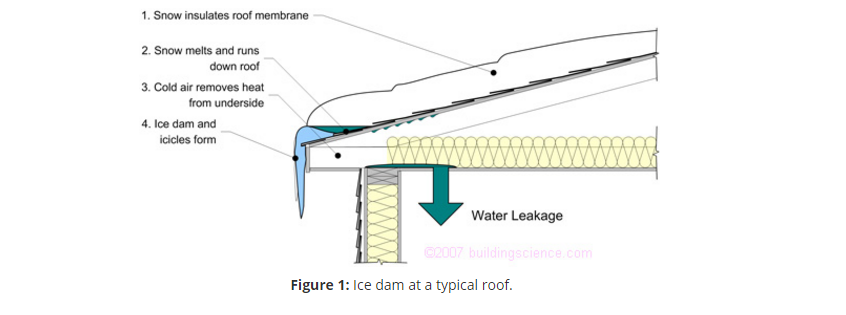Ice Dams

Ice dams (Photograph 1) happen when the outside temperature is below freezing, the roof deck temperature is above freezing, and there is snow on the roof.1 The warm roof deck causes the snow on top of the roof deck to melt, and the melt water runs down to the edge of the roof where the water freezes leading to a buildup of ice and a backup of water, hence the term “dam” (Figure 1).
Why Ice Dams Occur

Ice dams are a common roof performance problem in buildings that experience snowfall and at least a month of below freezing temperatures. The combination of sufficient roof pitch, adequate insulation just above the exterior wall, and air sealing at the wall-roof assemblies transition are all essential to prevent ice dams. But ice dams can occur even in properly detailed roof assemblies from differential solar snow melt. This digest outlines both the causes and solutions to ice dam problems.
Unvented Roof Assemblies for all Climates

Unvented roof assemblies, such as conditioned attics and unvented cathedral ceilings, are becoming common in North American construction. These assemblies are created by eliminating ventilation openings and moving the thermal, moisture and air control boundaries to the plane of the roof deck. This document provides a brief description of different types of unvented roof assemblies and the benefits of unvented roof construction.
 Ymker Insulation
Ymker Insulation